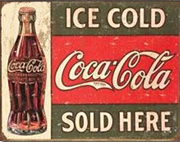APRIL 6, 2015
BATON ROUGE, LOUISIANA. Finally I’ve had a chance to meet “Ol’ Man River.” We’re in the deep South, where folks speak with pronounced southern accents and address us as “y’all.” Where there are stately antebellum plantations on display, riverboats on the water and plates piled high with jambalaya, crawfish and other tasty Creole dishes. Where the weather is delightfully warm but very humid. Baton Rouge, the state capital, is located on the eastern banks of the Mississippi River. Settled by Europeans on Native American hunting grounds, the city exudes a profound influence of English, French, Spanish, and native cultures. The city is proud of its Cajun and Creole heritage, with clubs famous for playing the blues, and streets full of restaurants serving up everything from spicy Bayou foods to Caribbean home cooking.
THE MIGHTY MISSISSIPPI RIVER

Bridge over the Mississippi River at Baton Rouge, Louisiana. It wasn’t as bad driving our motorhome over this bridge as I feared it was going to be.
The prominent geographic feature of Baton Rouge is the Mississippi River. It is the third longest river in North America and flows 2,350 miles from its source at Lake Itasca in Minnesota through the center of the continental United States to the Gulf of Mexico. A raindrop falling in Lake Itasca arrives here at the Gulf of Mexico in about 90 days.
RIVER TRAFFIC. To move goods up and down the Mississippi, the U.S. Army Corps of Engineers maintains a 9-foot shipping channel from Baton Rouge to Minneapolis, Minnesota. A 45-foot channel is maintained to allow ocean-going vessels access to ports as far upstream as Baton Rouge. And here are some statistics which demonstrate the importance of the river in terms of commerce. With one gallon of fuel, a ton of cargo can be moved 60 miles by truck, 202 miles by rail and 514 miles by barge. One barge holds as much as 15 rail hoppers and 58 semi-truck trailers. One barge-load of wheat is enough to bake 2. 25 million loaves of bread. The world’s largest agricultural business industry relies on the river basin and the River itself for shipping vast quantities of the world’s food supply to market.
LOUISIANA STATE CAPITOL BUILDINGS: THE OLD AND THE NEW.
THE OLD BUILDING. In September of 1847, the City of Baton Rouge donated to the state of Louisiana the land for a state capitol building, taking the seat of the capitol away from the City of New Orleans. The land stands high top a Baton Rouge bluff facing the Mississippi River. The structure itself is one of the most distinguished examples of Gothic Revival architecture in the United States. The building design is so unusual and distinctive that its romantic, medieval appearance earned it ridicule from the timelessly famous author, Mark Twain. In 1932 the building was abandoned for the new state capitol.
THE NEW BUILDING. The “new” capitol is a 34 story, 450 foot tall limestone skyscraper…the tallest capitol in the United States. It is often thought of as “Huey Long’s monument” due to the influence of the former Governor and United States Senator in getting the capitol built.

The “new” Louisiana state capitol. At 34 stories, it is the tallest of all capitols in the United States. Former Governor Huey Long’s grave site is on the left side of this photo, in the foreground.
HUEY LONG’S GRAVESITE. At the entrance to the new capitol building stands the grave site of former Governor Huey Long, who was assassinated there on the day after he announced his intention to run for President of the United States, to succeed Franklin D. Roosevelt. Long, nicknamed The Kingfish, was a member of the U.S. Senate after he served as governor. He was an outspoken populist, who denounced the rich and the banks and called for “Share the Wealth.” He was a strong advocate for wealth redistribution measures, especially in the form of a net asset tax on corporations and individuals to curb the poverty endemic nationwide during the Great Depression.
VISIT US AGAIN SOON.























